Test Bank for Strategic Management Concepts 13th Edition David
$38.00
Test Bank for Strategic Management Concepts 13th Edition David Download
- Description
- Reviews (0)
Description
You will receive this product immediate after placing the order
CHAPTER 2
THE BUSINESS VISION AND MISSION
CHAPTER OUTLINE
¨
What Do We Want to Become?
¨
What is Our Business?
¨
Importance of Vision and Mission Statements
¨
Characteristics of a Mission Statement
¨
Mission Statement Components
¨
Writing and Evaluating Mission Statements
CHAPTER OBJECTIVES
After studying this chapter, you should be able to do the following:
1. Describe the nature and role of vision and mission statements in strategic management.
2. Discuss why the process of developing a mission statement is as important as the resulting document.
3. Identify the components of mission statements.
4. Discuss how clear vision and mission statements can benefit other strategic-management activities.
5. Evaluate mission statements of different organizations.
6. Write good vision and mission statements.
CHAPTER OVERVIEW
Chapter 2 focuses on the concepts and tools needed to evaluate and write business vision and mission statements. A practical framework for developing mission statements is provided. Actual mission statements of large and small organizations and profit and nonprofit enterprises are presented and critically examined. The process of creating a vision and mission statement is discussed. The global economic recession has resulted in many firms changing direction, thereby altering their entire vision and mission in order to survive.
Doing Great in a Weak Economy – Wal-Mart
At a time when most firms were struggling, Wal-Mart significantly increased its revenues between 2007 and 2008. Fortune Magazine in 2009 rated McDonald’s as the 11th “Most Admired Company in the World”. Wal-Mart continues to expand internationally and is revitalizing its electronics departments in an effort to pull market share from competitors. Wal-Mart is a corporate leader in sustainability and is in the process of redefining the global consumer products labeling process.
EXTENDED CHAPTER OUTLINE WITH TEACHING TIPS
I. WHAT DO WE WANT TO BECOME?
It is especially important for managers and executives in any organization to agree on the basic vision that the firm strives to achieve in the long term.
A. Importance of a Vision Statement
1. A vision statement should answer the basic question, “What do we want to become?” A clear vision provides the foundation for developing a comprehensive mission statement.
2. Many organizations have both a vision and a mission statement, but the vision statement should be established first and foremost.
a. The vision statement should be short, preferably one sentence, and as many managers as possible should have input into developing the statement.
b. Table 2-1 provides examples of several vision statements.
VTN (Visit the Net): The website www.csuchico.edu/mgmt/strategy/module1/sld007.htm gives an introduction to the vision concept.
VTN (Visit the Net): The website www.csuchico.edu/mgmt/strategy/module1/sld008.htm gives an introduction to the mission concept.
II. WHAT IS OUR BUSINESS?
A. Mission Statements
1. Peter Drucker says that asking the question, “What is our business?” is synonymous with asking the question, “What is our mission?”
2. A mission is an enduring statement of purpose that distinguishes one organization from other similar enterprises. The mission statement is a declaration of an organization’s “reason for being.”
3. Sometimes called a creed statement, a statement of purpose, a statement of philosophy, a statement of beliefs, a statement of business principles, or a statement “defining our business,” a mission statement reveals what an organization wants to be and whom it wants to serve.
4. See Figure 2-1 – the Comprehensive Strategic Management Model. It shows developing mission and vision as the first step in strategic management.
5. Table 2-2 provides examples of mission statements.
B. Vision versus Mission
1. Many organizations develop both a mission statement and a vision statement. Whereas the mission statement answers the question, “What is our business?” the vision statement answers the question, “What do we want to become?”
2. Both profit and vision are needed to motivate a workforce effectively.
C. The Process of Developing a Vision and Mission Statement
1. As indicated in the strategic-management model, a clear mission statement is needed before alternative strategies can be formulated and implemented.
2. It is important to involve as many managers as possible in the process of developing a mission statement, because through involvement, people become committed to an organization.
3. A widely used approach to developing a mission statement is to
a. Select several articles about mission statements and ask all managers to read these as background information.
b. Ask managers to prepare a mission statement for the organization.
c. A facilitator, or committee of top managers, should then merge these statements into a single document and distribute this draft to all managers.
d. A request for modifications, additions, and deletions is needed next along with a meeting to revise the document.
VTN (Visit the Net): The website www.csuchico.edu/mgmt/strategy/module1/sld009.htm gives questions that help to develop mission and vision statements.
Teaching Tip: An excellent book on mission statements is entitled, The Mission Statement Book: 301 Corporate Mission Statements from America’s Top Companies. The book is written by Jeffrey Abrahams and is an excellent resource for individuals interested in knowing more about the purpose and value of corporate mission statements.
III. IMPORTANCE (BENEFITS) OF VISION AND MISSION STATEMENTS
A. The Importance of Mission Statements is Well Documented
Rarick and Vitton found that firms with a formalized mission statement have twice the average return on shareholders’ equity than those firms without a formalized mission statement. Bart and Baetz found a positive relationship between mission statements and organizational performance. Business Week reports that firms using mission statements have a 30 percent higher return on financial measures than those without such statements.
B. Reasons for Developing a Written Mission Statement:
1. To ensure unanimity of purpose within the organization.
2. To provide a basis, or standard, for allocating organizational resources.
3. To establish a general tone or organizational climate.
4. To serve as a focal point for individuals to identify with the organization’s purpose and direction, and to deter those who cannot from participating further in the organization’s activities.
5. To facilitate the translation of objectives into a work structure involving the assignment of tasks to responsible elements within the organization.
6. To specify organizational purposes and the translation of these purposes into objectives in such a way that cost, time, and performance parameters can be assessed and controlled.
VTN (Visit the Net): A great article on writing a meaningful mission statement is available at http://sbinformation.about.com/cs/businessplans/a/mission.htm.
C. A Resolution of Divergent Views
1. Developing a comprehensive mission statement is important because divergent views among managers can be revealed and resolved through this process.
2. Considerable disagreement among an organization’s strategists over vision and mission can cause trouble if not resolved.
3. An organization that fails to develop a vision statement as well as a comprehensive and inspiring mission statement loses the opportunity to present itself favorably to existing and potential stakeholders.
IV. CHARACTERISTICS OF A MISSION STATEMENT
A. A Declaration of Attitude
1. A mission statement is a declaration of attitude and outlook more than a statement of specific details. It is usually broad in scope for at least two reasons:
a. First, a good mission statement allows for the generation and consideration of a range of feasible alternative objectives and strategies without unduly stifling management creativity.
b. Second, a mission statement needs to be broad to effectively reconcile differences among and appeal to an organization’s diverse stakeholders, the individuals and groups of persons who have a special stake or claim on the company.
2. An effective mission statement arouses positive feelings and emotions about an organization; it is inspiring in the sense that it motivates readers to action.
3. It should be short – less than 250 words.
4. Table 2-3 lists ten benefits of having a clear mission and vision.
B. A Customer Orientation
1. A good mission statement describes an organization’s purpose, customers, products or services, markets, philosophy, and basic technology.
2. According to Vern McGinnis, mission statements should 1) define what the organization is and what it aspires to be, 2) be limited enough to exclude some ventures and broad enough to allow for creative growth, 3) distinguish a given organization from all others, 4) serve as a framework for evaluating both current and prospective activities, and 5) be stated in terms sufficiently clear to be widely understood throughout the organization.
3. Good mission statements identify the utility of a firm’s products to its customers.
Teaching Tip: Your students may find it interesting to know that not only corporations find mission statement useful. Steven Covey, the author of the highly successful book, The Seven Habits of Highly Successful People, has written two books that explain how individuals and families can use mission statements to help them determine who they are and what they want to accomplish. The first book, How to Develop and Use a Personal Mission Statement, explains why individuals should write mission statements to provide a sense of direction and purpose for their lives. The second book, How to Develop a Family Mission Statement, applies the same principles in a family concept. Laurie Beth Jones advances a similar set of ideas in her popular book, The Path: Creating Your Mission Statement for Work and for Life.
V. MISSION STATEMENT COMPONENTS
A. Table 2-4 lists 8 characteristics of a mission statement.
B. Components and Questions That a Mission Statement Should Answer
1. Customers: Who are the firm’s customers?
2. Products or services: What are the firm’s major products or services?
3. Markets: Geographically, where does the firm compete?
4. Technology: Is the firm technologically current?
5. Concern for survival, growth, and profitability: Is the firm committed to growth and financial soundness?
6. Philosophy: What are the basic beliefs, values, aspirations, and ethical priorities of the firm?
7. Self-concept: What is the firm’s distinctive competence or major competitive advantage?
8. Concern for public image: Is the firm responsive to social, community, and environmental concerns?
9. Concern for employees: Are employees a valuable asset of the firm?
C. Table 2-5 provides excerpts from the mission statements of different organizations to exemplify the nine essential mission statement components.
VTN (Visit the Net): The websites www.csuchico.edu/mgmt/strategy/module1/sld015.htm, http://www.csuchico.edu/mgmt/strategy/module1/sld016.htm, and http://www.csuchico.edu/mgmt/strategy/module1/sld016.htm provide examples of vision and mission statements that can be critiqued.
Teaching Tip: If you are interested in obtaining the mission statement for a particular company, a good place to look is the company’s website or its annual report. Annual reports can be obtained directly from a company or through a service that disseminates annual reports. An example of the latter is The Public Register’s Annual Report Service at {http://www.prars.com}. This service provides free access to the annual reports of over 3,600 public companies.
VI. WRITING AND EVALUATING MISSION STATEMENTS
A. Perhaps the best way to develop a skill for writing and evaluating mission statements is to study actual company missions.
B. There is no one best mission statement for a particular organization, so good judgment is required in evaluating mission statements.
VTN (Visit the Net): The website http://www.nonprofits.org/npofaq/03/21.html provides mission statement information on nonprofit firms.
Teaching Tip: Along with vision statements and mission statements, some organizations articulate corporate “values” statements, which describe the underlying principles that determine everything the organization does and stands for.
Johnson & Johnson: www.jnj.com/connect/caring/employee-health
Samsung: www.samsung.com/us/aboutsamsung/corporateprofile/valuesphilosophy.html
Teaching Tip: You are invited to visit the text’s website at http://www.prenhall.com/david for this chapter’s World Wide Web exercises.
ISSUES FOR REVIEW AND DISCUSSION
1. What are some different names for “mission statement”, and where will you likely find a firm’s mission statement?
Answer: A mission statement is sometimes called a creed statement, a statement of purpose, a statement of philosophy, a statement of beliefs, a statement of business principles, or a statement “defining our business”. If you are interested in obtaining the mission statement for a particular company, a good place to look is the company’s website or its annual report.
2. If your company does not have a vision or mission statement, describe a good process for developing these documents.
Answer: A widely used approach to developing a vision or mission statement is first to select several articles about these statements and ask all managers to read these as background information. Then, managers should prepare a vision or mission statement for the organization. A facilitator or committee should then merge these statements into a single document and distribute the draft statements to all managers. A request for modifications, additions, and deletions is needed next, along with a meeting to revise the document.
3. Explain how developing a mission statement can help resolve divergent views among managers in a firm.
Answer: The question “What is our business?” can create controversy. Raising the question often reveals differences among strategists in the organization. Individuals who have worked together for a long time may realize that they are in fundamental disagreement. Negotiation, compromise, and eventual agreement on important issues are needed before people can focus on more specific strategy formulation activities.
4. Drucker says that the most important time to seriously reexamine the firm’s vision/mission is when the firm is very successful. What is this?
Answer: According to Drucker, the most important time to ask seriously “What do we want to become?” and “What is our business?” is when a company has been successful. Success obsoletes the very behavior that achieved it, and creates new realities and different problems.
5. Explain why a mission statement should not include monetary amounts, numbers, percentages, ratios, goals, or objectives.
Answer: A mission statement is broad in scope for two reasons. First, it allows for the generation and consideration of a range of feasible alternative objectives and strategies without unduly stifling management creativity. Excess specificity would limit the potential of creative growth for the organization. Second, a mission statement needs to be broad to reconcile differences effectively among, and appeal to, an organization’s diverse stakeholders. Thus, a mission statement should be reconciliatory.
6. Discuss the meaning of the following statement: “Good mission statements identify the utility of a firm’s products to its customers.
Answer: A good mission statement reflects the anticipations of customers. Organizations should identify customers’ needs and then provide a product or service to fulfill those needs. For example, AT&T’s mission statement focuses on communication rather than on telephones; Exxon-Mobil’s mission statement focuses on energy rather than on oil or gas; Union Pacific’s mission statement focuses on transportation rather than on railroads; and Universal Studio’s mission statement focuses on entertainment rather than on movies.
7. Distinguish between the “self-concept” and the “philosophy” components in a mission statement. Give an example of each for your university.
Answer: The self-concept component of a mission statement describes a firm’s distinctive competence or major competitive advantage. The philosophy component of a mission statement refers to the basic beliefs, values, aspirations, and ethical priorities of the firm. Students’ examples of each for their universities will vary and should draw from the section in the text on “mission statement components”.
8. When someone or some company is “on a mission” to achieve something, many times they cannot be stopped. List three things in prioritized order that you are “on a mission” to achieve in life.
Answer: Students’ responses will vary, but should draw from everything they have learned from the textbook regarding mission and vision statements.
9. Compare and contrast vision statements with mission statements in terms of composition and importance.
Answer: Many organizations develop both a mission statement and a vision statement. Whereas the mission statement answers the question, “What is our business?” the vision statement answers the question, “What do we want to become?” Both statements are essential for firm success.
10. Do local service stations need to have written vision and mission statements? Why or why not?
Answer: Less formality and detail characterize strategic management in small businesses such as a local service station. However, local service stations are not immune to competitive pressures, changes in technology, changes in demographic factors, and resistance to change. Therefore, it is recommended that even the smallest organization develop a written mission statement. Such a formal statement indicates vision and good management, which could enhance a small business’s efforts to secure bank financing and to develop good supplier, customer, and employee relationships.
11. Why do you think organizations that have a comprehensive mission statement tend to be high performers? Does having a comprehensive mission cause high performance?
Answer: Having a comprehensive mission statement does not guarantee or cause high performance. However, a comprehensive mission statement can contribute significantly to high performance. As described in the chapter, a comprehensive mission statement provides numerous benefits that usually translate into high performance.
12. Explain why a mission statement should not include strategies and objectives.
Answer: A mission statement should not include strategies and objectives because the statement needs to be broad in scope to effectively provide a basis for performing an external and internal audit and for generating and selecting among alternative strategies. Including specific strategies and objectives in a mission statement could reduce the level of innovative and creative thinking in an organization. Also, including specific strategies and objectives in a mission statement jeopardizes the potential for the statement to be widely accepted by all managers and employees of the organization. Acceptance of a clear mission is a prerequisite for gaining acceptance for strategies and objectives of the organization.
13. What is your college or university’s self-concept? How would you state that in a mission statement?
Answer: These answers will vary by institution. See the examples in the chapter.
14. Explain the principal value of a vision and mission statement.
Answer: Many organizations develop both a mission statement and a vision statement. Whereas the mission statement answers the question, “What is our business?” the vision statement answers the question, “What do we want to become?” Both the vision statement and the mission statement ensure unanimity of purpose within the organization and make important statements about “who the firm is” and “what it wants to become” to outside stakeholders.
15. Why is it important for a mission statement to be reconciliatory?
Answer: A mission statement needs to be reconciliatory because the claims of a firm’s various stakeholders often conflict. An effective mission statement reconciles major differences among key stakeholders.
16. In your opinion, what are the three most important components to include in writing a
mission statement? Why?
Answer: All of the evaluative criteria described in Chapter 2 are important, but three are particularly important: customers, products or services, and markets.
17. How would the mission statements of a for-profit and a nonprofit organization differ?
Answer: The mission statements of profit versus nonprofit organizations would not differ in format, except for the survival, growth, and profitability component.
18. Write a vision and mission statement for an organization of your choice.
Answer: This is a worthwhile classroom activity.
19. Conduct an Internet search with the keywords “vision statement” and “mission statement.” Find company vision and mission statements and evaluate the documents. Write a one-page single-spaced report on your findings.
Answer: This is a worthwhile activity for students to perform as a homework assignment followed by class discussion of the assortment of statements identified.
20. Who are the major stakeholders of the bank that you do business with locally? What are the major claims of those stakeholders?
Answer: The major stakeholders of a bank include commercial customers, consumer customers, shareholders, communities, managers, and employees. Each stakeholder group relies upon the organization. Customers expect the bank to perform in a manner that protects them financially. Shareholders expect the firm to be profitable. Local communities rely upon the bank to provide jobs and pay taxes. Employees rely upon the bank for their income.
21. List at least seven characteristics of a mission statement.
Answer: Table 2-4 lists eight characteristics that may be included in students’ lists: 1) it is broad in scope and does not include monetary amounts, numbers, percentages, ratios, or objectives; 2) it is less than 250 words; 3) it is inspiring; 4) it identifies the utility of a firm’s products; 5) it reveals whether the firm is socially responsible; 6) it reveals whether the firm is environmentally responsible; 7) it includes nine components (customers, products and services, markets, technology, concern for survival/growth/profits, philosophy, self-concept, concern for public image, concern for employees); and 8) it is enduring and can reconcile differences among and appeal to an organization’s diverse stakeholders.
22. List eight benefits of having a clear mission statement.
Answer: Table 2-3 lists ten characteristics that may be included in students’ lists: 1) achieve clarity of purpose among all managers and employees; 2) provide a basis for all other strategic planning activities; 3) provide direction; 4) provide a focal point for all stakeholders of the firm; 5) resolve divergent views among managers; 6) promote a sense of shared expectations among all managers and employees; 7) project a sense of worth and intent to all stakeholders; 8) project an organized, motivated organization worthy of support; 9) achieve higher organizational performance; and 10) achieve synergy among all managers and employees.
23. How often do you feel a firm’s vision and mission statement should be changed?
Answer: This depends on the individual firm. Vision and mission statements should be evaluated on a regular basis to determine if they are still appropriate. Firms may wish to change the statements in times of crisis and in times of success. Ultimately the vision and mission should be in tune with the company and its environment.
Be the first to review “Test Bank for Strategic Management Concepts 13th Edition David”
You must be logged in to post a review.



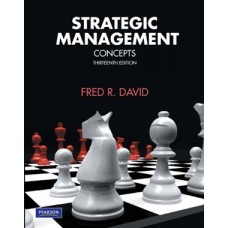
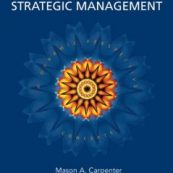
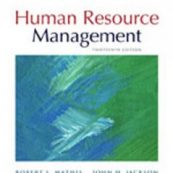

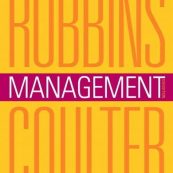

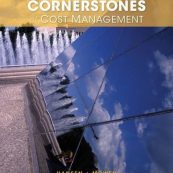
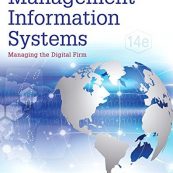

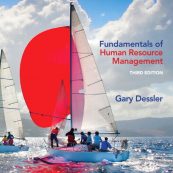

Reviews
There are no reviews yet.